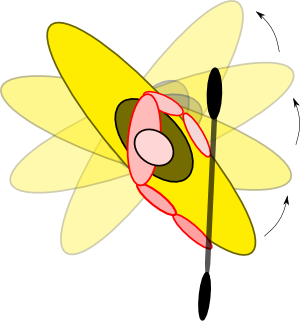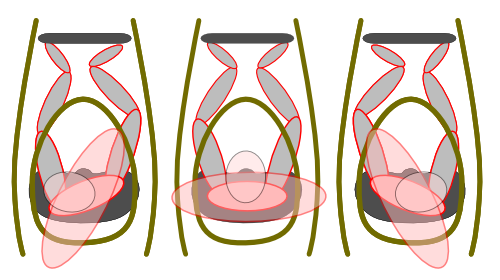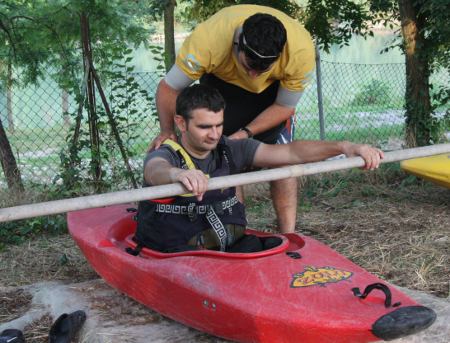One of the first rules to be observed while you are learning to kayak is that your instinct is often probably wrong. Everybody try to turn the boat using the power of the arms to do more and more powerful strokes. It is much easier think that we could turn the boat moving the paddle from the bow to the stern. However the most efficient movement comes from the idea that the paddle and your shoulders are blocked into the space and the kayak is turning under them.
In this article I'll try to explain this non-trivial movement, explaining a simple fundamental move: the circular stroke.
Video Tutorial
What is it?
The circular stroke is used to rotate the kayak when we need to change or correct the direction. With modern creek kayaks the circular stroke is used much more to correct the rotation rather than turning the boat in a new direction. With longer boats, like those for sea or lake, the move is primarily used to actively turn.
How to do it
To turn the kayak is important to understand a simple but non-intuitive concept: the paddle has to remain stuck in the water, while the legs and hips rotate below us, turning the kayak.

In this image you may notice that the upper part of the body must remain still with the paddle substantially parallel to the shoulders throughout the movement. The legs along with the kayak must instead turn below us.
The movement begins with the torso rotated toward the direction we are aiming and the paddle in the water near the bow. The rotation of the torso will bring the kayak in the desired direction while the arms will simply hold the paddle still in front of our shoulders.
To effectively do this movement is important to think about moving the legs and not concentrate in putting force on the paddle, because that would produce the only result of moving liquid rather than the boat.
How to turn the shoulders
The rotation of the torso is the engine of this stroke. The strength of our arms is not enough to turn the canoe (and our weight) effectively.
The rotation of the shoulders is a movement more complex than you might think, and it starts from the hips rotation.

A good rotation of the shoulders comes from the hips rotation on the seat and continue with your torso.
To turn your hips on the seat use the legs as shown, extending one and bending the other. To turn the hips you should not be too compressed into the seat, with the legs free to make this movement. The heels should be about 4 fingers away from the footrests and your knees should be able to move back and forth for at least 5-8 cm. The thicknesses of the hips-pad must allow a 20-30 degrees rotation of the hips.
The spine can rotate only if sufficiently straight.
The complete rotation of the shoulders is therefore obtained by turning about 20-30 degrees the hips and at least 45 degrees the vertebral column. If you have a good mobility, you could rotate up to 70-80 degrees your body.
How to learn it
A good practice to begin is to make dry exercises with the kayak out of the water to become familiar with the movement. At the beginning, the rotation of the shoulders could affect the balance.
First of all you can focus on the hips rotation on the seat due to the movement of the legs. As soon as the movement of the hips is familiar, you can try to rotate also the spine to reach the maximum possible rotation.

A good exercise is to use a fixed shaft and turn the kayak under it.
When the rotation movement begins to be natural, you can try it in the water without the paddle. You now need to get familiar with the movement despite the instability of the kayak. One of the first exercises that I recommend is to make a forward circular stroke followed by a back circular stroke with the opposite effect. In this way it's easy to control that your shoulders and paddle keep the same position in the space and the kayak is turning beneath us.
As a next step you can practice toggling back and forward strokes on opposite sides, producing a continuous rotation.
Don't forget to check always that the center of the shaft needs to be just in front of our shoulders during all movement. It is very easy to stop using the body rotation and to start moving just the arms!
Shoulders rotation is used in many movements, such as rudder, draw stroke, and even in forward paddle. According to my experience it is the key to be truly effective, without using more energy than necessary.
Buon Lavoro!


